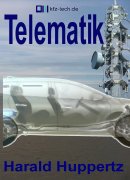
Bookstore
Exercises
Wheel change
Save Energy
History
Formulary

Ganz neu ...

Ganz neu ...
Germany 1
Germany 2
Germany 3
Germany 4
Germany 5
Audi Museum 1
Audi Museum 2
Audi Museum 3
Audi Museum 4
Audi Museum 5
Audi Museum 6
Audi
History
Videos
History DKW 1
August Horch 1
1873 NSU History
Bernd Rosemeyer
2015 Vienna Motor Symposium
2015 SB Plus
2015 Light Technology
2015 A4
2015 quattro
2015 Prologue
2015 R8 V10/Plus
2015 TT Roadster
2015 Q7
2014 4,0 V8 TFSI
2014 A7 h-tron
2014 Q3
2014 RS Q3
2014 A1
2014 A6
2014 A3 Sportback e-tron
2014 Le Mans Victory
2014 S1
2014 TT SUV Concept
2014 TT
2014 A3 Cabriolet
2014 R18 e-tron
2013 A3 Sportback g-tron
2013 A8
2013 RS7 Sportback
2013 A3 Sedan
2013 S3 Sportback
2012 Q5
2012 RS 5
2012 A4 Sportback
2012 A3 Sportback
2012 A3
2011 A1 Sportback
2011 RS 3
2011 Q3
2011 A5 Coupe
2011 Q5 Hybrid
2011 A6 Avant
2010 A1
2010 A6
2010 A7
2010 A8
2009 A5 Sportback
2009 R8 Spider
2008 Q5
2008 A3 Cabrio
2007 Audi A5
2006 R8
2006 R8 Drivetrain
2006 TT
2006 S3
2005 Q7
2005 R 10 TDI
2005 RS 4
2004 A6
2003 A3
2002 R8 Race version
2002 A8 4-wheel-autom.
2000 Allroad quattro
2000 A2 3-l-car
1999 A2
1999 TT Roadster
1998 R8R
1998 TT
1996 Lamborghini
1996 A3
1991 Audi 100 C4
1991 Cabrio
1982 Audi 100 C3
1980 Audi Quattro
1976 100
1974 Audi 50
1972 Audi 80
1970 100 Coupe
1969 Audi 100 Cabrio
1968 Audi 100
1967 Ro80 engine
1967 NSU Ro 80
1967 NSU TT
1967 NSU TTS
1966 60/Super 90
1965 F 103
1964 DKW F12 Roadster
1964 DKW F 102
1963 DKW F 12
1961 Auto Union 1000S
1959 Junior
1956 DKW Monza
1956 DKW Munga
1953 DKW F 91
1952 NSU Max
1950 DKW F 89
1949 DKW Transporter
1938 Audi 920
1936 Horch 851
1934 Auto Union C-type
1933 W 22
1932 Auto Union
1930 DKW F 1
1928 Wanderer 10/II
1926 Horch 303
1924 Audi E 21/78
1914 14/35
1913 Wanderer 5/12
1913 Horch 8
|
 Audi A3 Sportback g-tron Audi A3 Sportback g-tron
|
|